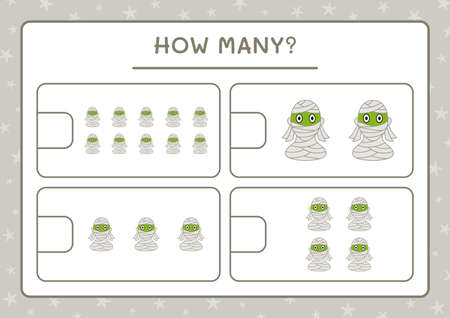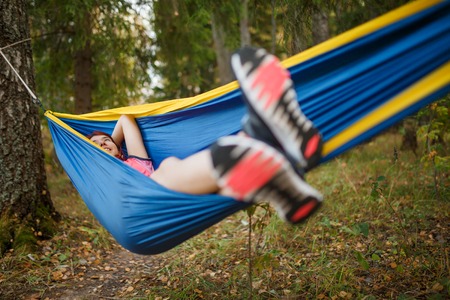1. Understanding Sleeping Bag Temperature Ratings
If you want to stay cozy and safe while camping in the U.S. throughout all four seasons, getting a grip on sleeping bag temperature ratings is a must. These ratings tell you the lowest temperatures at which a bag should keep you comfortable—but they’re not always as straightforward as they seem.
How Are Sleeping Bag Temperature Ratings Determined?
Most quality sleeping bags sold in the U.S. are tested using EN (European Norm) or ISO (International Organization for Standardization) standards. These tests use a mannequin with sensors, dressed in base layers, inside the bag under controlled conditions. The two main numbers you’ll see are:
| Rating Type | What It Means |
|---|---|
| Comfort Rating | The lowest temp at which the average “cold sleeper” (usually women) can sleep comfortably. |
| Limit Rating | The lowest temp at which the average “warm sleeper” (usually men) can sleep without waking up from cold. |
What Do These Ratings Mean for Real-World Comfort?
The EN/ISO ratings are super helpful, but remember—everyone sleeps differently! Factors like your metabolism, what you wear, if you’ve eaten, your tent setup, and even wind chill can impact how warm you feel. Most American campers find that choosing a bag with a comfort rating just below the coldest temps they expect works best for staying comfy.
Quick Tip:
- If you tend to get cold easily, shop based on the comfort rating.
- If you usually run warm, the limit rating might be okay for you.
- Add 10–15°F to any rating if you’re camping in high humidity or windy conditions common in many U.S. parks.
Understanding EN/ISO Standards for U.S. Conditions
The EN/ISO system is pretty reliable, but it’s based on European testing environments—so take local U.S. weather into account! For example, mountain ranges like the Rockies or Sierras can have big temperature swings; desert nights drop fast even in summer; and humidity in places like the Southeast will make cold feel colder. Always layer up and don’t be afraid to use an insulated sleeping pad for extra warmth.
2. Choosing Between Down and Synthetic Fills
When it comes to picking the right sleeping bag for your adventures, one of the biggest decisions is choosing between down and synthetic insulation. Each type has its own set of benefits and drawbacks, so let’s break down the key differences to help you decide what works best for your trips—whether you’re car camping in Yellowstone or backpacking through the Rockies.
Down Insulation: Light, Warm, and Packable
Natural down comes from duck or goose feathers and is loved for its impressive warmth-to-weight ratio. If you’re looking to shave ounces from your pack or need something that compresses super small, down is hard to beat. However, traditional down can lose its insulating power if it gets wet—though many modern bags use water-resistant treatments to help with this.
Pros of Down:
- Very lightweight
- Packs down small for easy carrying
- Exceptional warmth
- Long-lasting if cared for properly
Cons of Down:
- Typically more expensive than synthetic
- Loses warmth when wet (unless treated)
- Requires special cleaning and care
Synthetic Insulation: Reliable and Budget-Friendly
Synthetic fills are made from polyester fibers designed to mimic the warmth of down but with better moisture resistance. They keep you warm even when damp and dry out quickly, making them a solid pick for wet climates like the Pacific Northwest or unexpected rainy nights.
Pros of Synthetic:
- Keeps insulating even when wet
- Dries faster than down
- Easier on the wallet
- Easier to clean—just toss it in the wash
Cons of Synthetic:
- Bigger and heavier for the same warmth as down
- Doesn’t compress as well as down
- May wear out sooner over years of use
Quick Comparison Table
| Down Fill | Synthetic Fill | |
|---|---|---|
| Weight | Lighter | Heavier |
| Packing Size | Compresses smaller | Takes up more space |
| Warmth-to-Weight Ratio | Excellent | Good/Moderate |
| Performance When Wet | Poor (unless treated) | Keeps warming even when damp |
| Price Range | $$$ (higher cost) | $ (budget-friendly) |
| Lifespan/Durability | Longer-lasting if maintained well | Tends to flatten over time with use/washing |
| Care & Cleaning | Needs special care/cleaning products | Toss in washer/dryer; low maintenance |
Which Should You Choose?
If you’re aiming for lightweight backpacking in mostly dry conditions and don’t mind spending a bit more, go with down. For family camping trips, damp environments, or if you want something affordable and easy to care for, synthetic fill is a reliable choice. Think about where youll be going and how youll use your sleeping bag most often—this will help steer you toward the best option for your next outdoor adventure.

3. Selecting the Right Sleeping Bag Shape and Size
When it comes to choosing a sleeping bag for year-round adventures, shape and size matter just as much as temperature ratings or fill material. The fit of your sleeping bag can make or break your night’s sleep in the backcountry, especially when temperatures drop. Let’s break down the differences between mummy, rectangular, and semi-rectangular bags and why finding the right fit is key for both warmth and comfort.
Understanding Sleeping Bag Shapes
| Shape | Main Features | Best For |
|---|---|---|
| Mummy | Snug fit that tapers at the feet, hooded design, less interior space | Cold weather camping, backpacking where weight and warmth matter most |
| Rectangular | Straight sides, lots of room to move, no hood, can often be unzipped flat | Car camping, summer trips, those who prioritize comfort and space |
| Semi-Rectangular (Barrel) | Mix of both shapes: more room than mummy but warmer than rectangular | All-purpose use, campers wanting a balance between warmth and space |
Why Shape Affects Warmth and Comfort
The closer your sleeping bag fits your body, the less air there is for you to heat up—this means a snug mummy bag will keep you warmer on chilly nights compared to a roomy rectangular bag. However, if you toss and turn a lot or like extra wiggle room, a rectangular or semi-rectangular style might help you sleep better, even if it sacrifices a bit of warmth.
The Importance of Size and Fit
Selecting the correct length and width is also crucial. Most brands offer regular and long sizes; some have women’s-specific models with more insulation in key areas. If your bag is too big, youll lose heat quickly; too small and you’ll feel cramped all night. Aim for a bag that allows you to stretch out without leaving excess space at your feet or sides.
Quick Tips for Finding Your Best Fit:
- Check the manufacturer’s sizing chart: Always compare your height and shoulder width to ensure a good match.
- Try before you buy: If possible, climb inside different shapes at an outdoor retailer.
- Consider your sleep style: Side sleepers may need extra width; cold sleepers should look for snugger fits with draft collars and hoods.
- If in doubt, go slightly snugger for cold weather use; leave extra space only if comfort outweighs warmth for you.
Choosing the right shape and size isn’t just about personal preference—it’s a smart way to ensure you stay warm, comfortable, and well-rested no matter what Mother Nature throws your way.
4. Seasonal Considerations: Matching Bags to Climate
Choosing the right sleeping bag isn’t just about comfort—it’s about staying safe and getting a good night’s sleep in the great outdoors. The season, climate, and even your camping style all play a big part in your decision. Here are some tips to help you pick a sleeping bag that fits your adventures, whether you’re camping under summer stars, braving snowy trails, or heading out year-round.
Summer Sleeping Bags
If you’re mostly camping in warm weather or mild climates, look for bags with higher temperature ratings (usually 35°F/1.7°C and above). These bags are lighter, more breathable, and often have features like extra ventilation zippers or the option to unzip fully and use as a blanket. Synthetic fill is popular for summer because it dries quickly if it gets damp from morning dew or humidity.
Winter Sleeping Bags
For cold-weather trips—think snow camping or high-altitude adventures—you’ll want a sleeping bag rated for lower temperatures (20°F/-6°C or below). Down fill is a favorite for winter bags because it offers the best warmth-to-weight ratio. Look for draft collars, insulated hoods, and snug mummy shapes to keep heat in and cold air out.
Three-Season & Year-Round Sleeping Bags
If you camp spring through fall or want just one bag for most situations, go for a three-season sleeping bag rated between 15°F (-9°C) and 30°F (-1°C). These offer a balance of warmth and packability. Some models feature adjustable insulation or removable liners so you can adapt as the weather changes.
How Destination and Activity Matter
Your destination’s average temperatures, elevation, and expected weather should all influence your choice. Backpackers often need lighter bags that pack down small, while car campers can opt for more spacious and cushy options. If you’re headed somewhere humid or rainy, synthetic fill is safer since it insulates even when wet.
Sleeping Bag Selection Guide by Season
| Season | Recommended Temp Rating | Fill Type | Best For | Features to Look For |
|---|---|---|---|---|
| Summer | 35°F (1.7°C) & up | Synthetic | Warm climates, casual camping | Ventilation zippers, lightweight design |
| Three-Season | 15–30°F (-9 to -1°C) | Synthetic or Down | Spring-Fall trips, variable weather | Mummy shape, draft tubes, moderate weight |
| Winter | <20°F (-6°C) | Down (or high-end synthetic) | Cold weather camping, alpine use | Insulated hood, draft collar, water-resistant shell |
Matching your sleeping bag to both the season and your style of camping means better rest on every trip. Think about where you’ll be going most often—and how you like to camp—to find your perfect fit.
5. Key Features and Accessories to Look For
When choosing a sleeping bag that’ll keep you comfortable throughout all seasons, it’s important to pay attention to features beyond just temperature ratings and fill types. The right details can make a big difference in warmth, convenience, and overall usability during your camping trips. Here are some key features and accessories to consider:
Zippers
Look for high-quality zippers that move smoothly and resist snagging. Some sleeping bags offer two-way zippers, which allow you to open the bottom for ventilation while keeping the top closed for warmth. Draft tubes—a strip of insulated material along the zipper—help prevent cold air from leaking in.
| Feature | Why It Matters |
|---|---|
| Two-way zipper | Improved ventilation and easy access |
| Anti-snag design | Saves time and frustration in the dark |
| Draft tube | Keeps cold air out, warmth in |
Draft Collars
A draft collar is an insulated baffle around the neck area that helps seal in heat and prevent warm air from escaping when temperatures drop. This feature is especially useful for early spring, late fall, or winter backpacking trips.
Hood Designs
Most mummy-style bags include a hood to help retain body heat. Look for contoured hoods with adjustable drawcords so you can cinch them tightly on chilly nights or loosen them for more comfort in warmer weather.
Stash Pockets
Internal stash pockets let you keep essentials like a headlamp, phone, or lip balm close by during the night. These small zippered or Velcro pockets add convenience, especially when you don’t want to rummage through your backpack in the dark.
Liners and Compression Sacks
Liners
A liner adds versatility to your sleeping bag setup. Use one to boost warmth during cold weather or keep your bag cleaner during summer trips. Liners come in materials like silk, cotton, or synthetic blends and are easy to wash after your adventure.
Compression Sacks
Packing space is always at a premium when camping or backpacking. Compression sacks help reduce the size of your sleeping bag so it fits more easily in your pack. Just be careful not to store your bag compressed long-term, as this can damage the insulation.
| Accessory | Main Benefit |
|---|---|
| Liner | Adds warmth; keeps bag clean; easy to wash |
| Compression sack | Makes packing easier by reducing bulk |
Quick Tips:
- If you’re camping in changing weather conditions, choose a sleeping bag with adjustable features like draft collars and hoods.
- Add a liner for extra warmth or cleanliness without buying a new bag.
- Always test zippers before heading into the backcountry—snags can be frustrating on cold nights!
- Use compression sacks for transport but store sleeping bags loosely at home to extend their lifespan.
By paying attention to these details and accessories, you’ll get more comfort, flexibility, and longevity from your sleeping bag—no matter which season you’re adventuring in!


